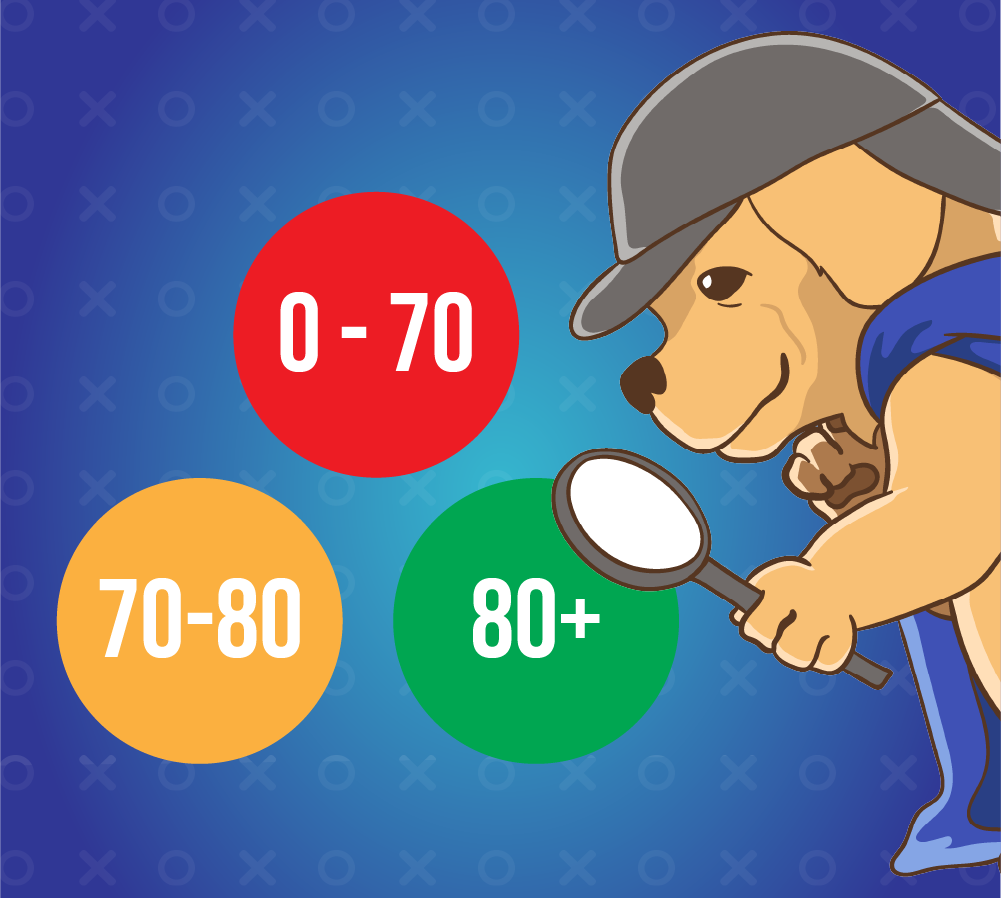
You have crafted the perfect email campaign. It’s in the Pantheon of all email marketing campaigns. You hit the “Send” button and…
Nothing.
Crickets.
How could this be? You know your campaign was brilliant, sure to net you boatloads of new business. Of course, it was. You followed Postaga’s advice on creating awesome cold email campaigns.
So, what went wrong?
Check your bounce rate.
There are a variety of reasons for emails that don’t get delivered; invalid email addresses, a temporary issue with an email server, and other technical issues. We’ll explain email bounce rate and how to get your emails to inboxes!
What is Email Bounce Rate?

Email bounce rate is the percentage of email addresses in your subscriber list that didn’t receive your email message because it was returned by a recipient email server. In other words, undelivered mail.
To calculate your email bounce rate, divide the number of email bounces by the total number of emails sent. To keep it simple if you sent 100 emails and 10 bounced back, the bounce rate would be 10%.
Hard Bounce versus Soft Bounce
There are two categories of bounce rates; hard and soft.
A hard bounce happens when an email bounces back to the sender as undelivered without having been accepted by the receiving mail server. There are three common reasons for a hard bounce:
- Invalid email address, the email address doesn’t exist
- The domain doesn’t exist
- The receiving email server has blocked delivery
A soft bounce happens when the email has bounced back to the sender as undelivered after being accepted by the recipient’s email server. These are the common reasons for a soft bounce:
- The mailbox is full
- The recipient’s email provider is down
- The email message was too big
What’s the Average Email Bounce Rate?
The average bounce rate varies by industry. In the marketing and advertising sector, the average rate is 1.12%, which includes both types of email bounces, hard and soft.
What’s a Good Email Bounce Rate?
If you’re a smart aleck like me, your answer was “0%!” That If your rate is average or below, you’re doing well. But really, a better metric is your open rate. The average open rate across a variety of industries is 21.33%. But, in our experience, Postaga users typically see an average open rate of 40-60%. The more you work to ensure your emails are reaching valid addresses, the better the open rate. Also, if you are seeing open rates of less than 40% for cold email outreach, I would strongly suggest reviewing your email account to ensure you are not having deliverability issues.
So while your bounce rate is important, your open rate is more important. Postaga can help you improve your open rate. Did you know for example that A/B Testing can improve your open rates by 49%?!
How to Reduce Email Bounce Rate
Luckily there are several ways you can drive that bounce rate down!
Verify Your Email List
A good email address today could be a dead email address tomorrow. People change their email addresses, retire, or change jobs. Postaga has an email verifier that ensures all invalid or outdated emails are removed from your list, reducing your bounce rate and improving email delivery.
Don’t Use Purchased Email Lists
If your goal is to increase your bounce rate, then by all means, use a purchased email mailing list because that will do the trick! The people on that contact list have not given you permission to send them emails and they may feel salty about receiving one and report it as spam. If you are on the receiving end of too many spam complaints, a domain could take the Draconian step of blocking your emails across the board.
You could also inadvertently run afoul of CAN-SPAM regulations and be fined thousands of dollars for every email sent!
Get Opt-In Contacts When Possible
When running an email marketing campaign that isn’t cold emailing, get opt-ins when you can. At least single opt-in but ideally, double opt-in.
In email marketing compliance, there are two types of opt-in consent, implied and explicit:
Implied consent is given when a person willingly provides their email address for some kind of business purpose but has not specifically stated that they want to receive marketing emails from you.
Explicit consent is given when you ask a person for permission to send them marketing emails and they agree. The person must manually opt-in by clicking a box on your form or confirming through double opt-in. A double opt-in requires a person to confirm the email address they provided you, usually done through an automated email sent immediately after they provide their address.
Authenticate Your Emails with SPF, DKIM, DMARC Records
All of those acronyms are a set of email authentication methods that prove to ISPs and mail service providers that senders are authorized to send emails from a particular domain and are a way to verify the email sending service you use is sending emails through your domain.
This accreditation verifies that email senders are legitimate and adding your domain to an email whitelist will help increase your deliverability rate.
Make Sure Your Email Isn’t Spammy
Nearly 85% of all emails are spam! That means people are already suspicious when they see an email from an unknown person or business. And email service providers are well aware of that statistic too so are always taking new and better measures to weed out spam before it even gets a chance to hit a customer’s email inbox.
When creating your email content avoid the spam filters:
- Avoid spammy words
- Keep a clean subject line
- Include an unsubscribe option
- Maintain consistency
- Provide unique value
- Avoid attachments
- Let the reader know where you’re from
Ensure You’re Not on Any Spam Lists
Spam lists or email blacklists are groups of IP addresses that are believed to send spam messages. When one of those addresses sends an email, it ends up in the recipient’s spam folder or is blocked completely.
You don’t want to end up on one of these lists! To find out if your IP address is on the naughty step, you can enter your server IP or domain into MX Toolbox’s Blacklist Check and it will let you know.
Monitor Your Sender Score

Just because you don’t find yourself on a blacklist doesn’t necessarily mean you have a sterling email sender reputation. You can check and monitor your Sender Score. Your Sender Score shows the reputation of your email program. It’s a number from 0-to 100 that gives you the quality of your sender reputation and shows how email service providers view your IP address.
In Conclusion
Even the best email campaigns aren’t effective if your mailing list isn’t comprised of valid email addresses. If you’ve had bounce rate issues in the past, taking the above steps can help improve the email deliverability rate of future campaigns.
FAQs

You can calculate your bounce rate by dividing the number of email bouncebacks you get compared to the total number of emails you sent. If you sent 1,000 emails and 100 of them bounced back, your bounce rate is 10%.
Bounce rate is one of the email marketing metrics you can use to help determine how successful your marketing campaign was. Acceptable bounce rates are below the marketing and advertising industry average of 1.2%.
A good bounce rate is below the average rate of 1.2%. As you take steps to clean up your list of recipients to only include active subscribers your email marketing bounce rates should steadily decrease for every future campaign.
The recipient’s mailbox may be full because it’s an inactive address. Cleaning up your email list regularly will help solve this issue. The recipient mail server r may be down for a period of time which isn’t a permanent issue. Don’t make your message too large.
The recipient’s mailbox may be full because it’s an inactive address. Cleaning up your email list regularly will help solve this issue. The recipient mail server r may be down for a period of time which isn’t a permanent issue. Don’t make your message too large.
Verifying email is the most important step you can take to reduce your bounce rate but it can be a time-consuming process. Luckily for you, Postaga can do it for you so you have more time to focus on all the new business coming your way!
Free 14-Day Trial
Start building relationships now with your fully-featured 14-day trial!
How We Compare
Terms | Done-For-You Terms | Privacy | Write For Us | Press
© 2024 Postaga. All Rights Reserved. Made with 
